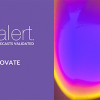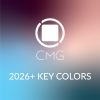Fashion is Color in Motion
 Fashion models glide down the runway, fiercely posing to display their garments, ranging from sleek swimwear to glimmering ball gowns. There’s a reason fashion is a three trillion dollar industry that accounts for 2 percent of the world’s GDP. The lights, the glitz, the fame; fashion is the quintessential ‘cool’ industry that specializes in all things beautiful.
Fashion models glide down the runway, fiercely posing to display their garments, ranging from sleek swimwear to glimmering ball gowns. There’s a reason fashion is a three trillion dollar industry that accounts for 2 percent of the world’s GDP. The lights, the glitz, the fame; fashion is the quintessential ‘cool’ industry that specializes in all things beautiful.
But all the flashy imagery wouldn’t be worth a thing without one essential ingredient: color. A nearly unending spectrum of color peeks out from handbags, jewelry, clothing, shoes, and even makeup. Although color is a huge part of our lives, it’s a must-have in the fashion realm.
Believe it or not, color and fashion have always been tied to each other. Current aspects of color design are heavily influenced by trends in the fashion industry and vice versa. Learn more about how color and fashion are connected, and what this link means for the future of color.
Linking fashion trends and color
Although color has been around since the beginning of time, it wasn’t analyzed as a science until the fashion revolution of the mid-1800s. Color was an expensive luxury for thousands of years. It became affordable to the average person only in the 1860s, thanks to synthetic dyes. Fashion designers were finally able to produce loud, garish outfits full of color without busting the budget.
Now that color was widely available, the European fashion scene exploded, with Paris at the epicenter. Fashion design became bolder and more outrageous, which increased competition between fashion designers.
What’s a dime-a-dozen fashion designer to do to stand out? Like any business, they had to find a competitive advantage. Wily fashionistas began experimenting with color to edge out other designers. The science of color design emerged from fierce competition as designers studied color and the impact it has on the human eye.
Color and fashion are bound together thanks to a shared history. Although they have a shared past, color and fashion work side by side in today’s modern fashion scene, too.
Time-sensitive
You know what they say. “One day you’re in, and the next day you’re out.” This is the underlying truth of color design and fashion. While fashion has seasons, color popularity also varies according to customer whims. For example, we think of pink as a girl’s color, but it was used for little boys until the 1900s.
A piece of fashion is lucky if it has a shelf life of longer than three months. While color design might not be as fickle, research suggests that color perception and meaning varies drastically from one person to the next. CMG defines a key color per global region every year, applying an expiration date to certain colors, noting what’s in and what’s out.
The time-sensitive nature of both color and fashion isn’t a mistake. They’re the symptoms of an audience hungry for innovation and the next big thing. It’s the duty of both color designers and fashion designers to identify early trends and act on them before it’s too late.
Attitude and emotion
We like to think of ourselves as logical beings, but humans are ruled by emotion.
Color in fashion has the ability to move us without saying a word. It can be used in complementary ways to emphasize meaning, like a bright yellow sundress, or even in disjointed ways to make viewers feel friction, like a striped lime green avant-garde sheath dress.
Color design is used by fashion brands to shape meaning in an audience through emotion. The right color brightens a model and highlights their best features. Even accessory and hair choices can affect the overall mood of a piece. When used by a trained eye, color helps fashion pieces give off an attitude or emotion that translates to the audience.
Storytelling
Color design helps brands tell their stories through color choice. While a piece of fashion can make a statement on its own, there’s a huge difference between a white A-line dress and a blue polka-dot A-line dress. The right color choice depends on the fashion brand creating the piece. Although color trends change frequently, fashion brands still need to stamp their identity on the piece, whether through construction or a specific color palette.
However, that doesn’t mean that brands have to stick with the same color. The best way to tell a story through color is to make compelling choices. Whether you flip the meaning of a color (like pink) or use it in a new way, color design and research help brands tell interesting stories.
International Forecasting Workshops and fashion
Thanks to their meteoric rise in popularity in the 1800s, color and fashion have always been linked. But how will the future of color design and fashion trends continue to evolve?
The study of color has evolved since the color revolution. A significant amount of research is put into forecasting color trends, as well as their applications in goods like clothing, jewelry, and handbags. Color design research affects branding strategies and product design for years to come, and it’s a force to be reckoned with, no matter your industry.
But this isn’t done on a whim. Color design and forecasting is both an art and a science. It’s the collective body of research from hundreds of color experts from across the globe every year. In fact, at CMG’s annual international forecasting workshops, color professionals and brands from around the world to collaborate on the best colors for their products.
We’ll continue morphing color design to reflect our collective consciousness. Whether it’s staring at you from the pages of a magazine or sashaying down the runway, color is an important ingredient in the fashion trends that we love.








